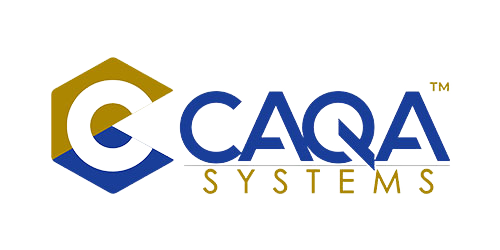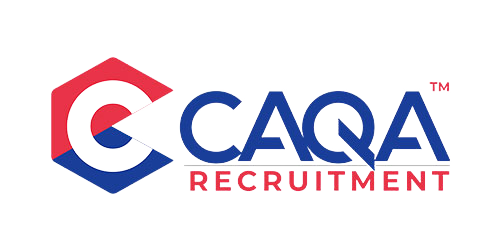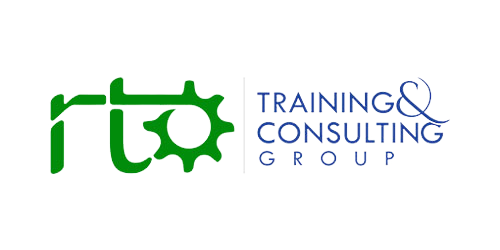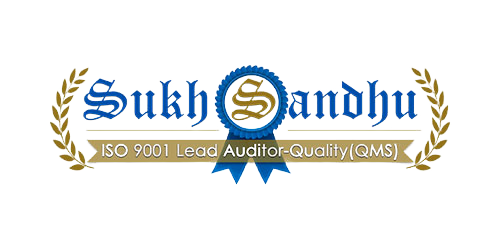While politicians celebrate "Fee-Free TAFE," a devastating exodus is hollowing out Australia's most responsive training providers. The numbers are stark, the consequences profound, and the silence deafening.
When Success Becomes Survival Risk: The Enterprise RTO Paradox
The irony cuts deep through Australia's vocational education landscape. Enterprise RTOs—the training providers most intimately connected to real workplace needs, most responsive to industry change, most embedded in authentic skill development—are vanishing at an alarming rate. Recent analysis reveals that 82% of enterprise RTOs no longer exist, with closures accelerating even as skill shortages reach crisis levels.
This isn't a market correction. It's a systematic dismantling of Australia's most agile training infrastructure, driven by policy choices that prioritise political optics over practical outcomes. When Commonwealth Bank closes its enterprise RTO, when mining companies abandon decades of workplace-based training, when manufacturing enterprises retreat from formal vocational education, something fundamental has broken in the system designed to connect learning with earning.
The enterprise RTO collapse represents the canary dying in Australia's skills mine. The question isn't whether we can afford to lose these providers—it's whether we can afford to ignore what their departure signals about the health of our entire vocational education ecosystem.
The Workplace Learning Advantage: What We're Really Losing
Enterprise RTOs occupy a unique space in the training landscape that no other provider type can replicate. Their closure doesn't just reduce provider numbers—it eliminates capabilities that are increasingly crucial in a rapidly changing economy.
Real-time responsiveness defines their core value proposition. When technology shifts, when processes evolve, when new safety requirements emerge, enterprise RTOs can adapt training within weeks rather than years. They don't need to navigate complex approval processes or coordinate with external stakeholders—they live within the change environment.
Contextual authenticity distinguishes their approach. Students learn not just theory but application, not just processes but problem-solving, not just skills but workplace culture. The difference between learning customer service in a simulated environment versus managing actual customer interactions while being assessed is the difference between training and education.
Immediate feedback loops enable continuous improvement. When graduates succeed or struggle in the workplace, the training provider knows immediately. Curriculum adjustments happen in real-time, quality improvements are driven by actual performance data, and learning outcomes directly correlate with business outcomes.
Cultural integration creates deeper learning experiences. Training delivered within enterprise RTOs embeds learners in authentic workplace communities, fostering not just skill development but professional identity formation. Students don't just learn what to do—they learn how to be professionals in their chosen field.
Cost efficiency benefits both employers and learners. Enterprise RTOs eliminate the friction and translation losses inherent in external training provision. They reduce time away from productive work, minimise travel and accommodation costs, and ensure training investments directly benefit the providing organisation.
The Policy Disaster: How Government Intervention Became Market Destruction
The enterprise RTO collapse isn't happening despite government intervention—it's happening because of it. Well-intentioned policies designed to improve quality and increase access have created an environment where the most responsive providers become the least viable.
The Compliance Avalanche
The introduction of the 2025 Standards for RTOs, while aimed at lifting quality, has created what many describe as a "compliance avalanche." These new requirements demand extensive policy rewrites, sophisticated risk management systems, detailed financial viability demonstrations, and complex governance arrangements.
For large training organisations with dedicated compliance teams, these requirements represent a manageable administrative burden. For enterprise RTOs focused on delivering training rather than managing bureaucracy, they represent an existential threat. The regulatory framework now requires more resources to demonstrate compliance than many enterprise RTOs require to deliver excellent training.
The regulatory response to sector problems has been comprehensively crude. Rather than targeting problematic providers with precision instruments, regulators have deployed broad-spectrum solutions that impact all providers equally. Quality enterprise RTOs find themselves subject to the same intensive oversight as fly-by-night operators, creating administrative costs that dwarf their training budgets.
The "Fee-Free TAFE" Funding Distortion
The political appeal of "Fee-Free TAFE" has created massive funding distortions that systematically disadvantage enterprise RTOs and other private providers. Government funding streams increasingly flow exclusively to public providers, regardless of performance outcomes or student satisfaction metrics.
This funding bias ignores compelling evidence about provider effectiveness. Private RTOs consistently outperform TAFE across multiple quality measures—completion rates, employer satisfaction, student outcomes, and cost efficiency. Yet, policy frameworks increasingly treat public provision as inherently superior, creating market distortions that punish performance and reward provider type.
Enterprise RTOs face the impossible task of competing with "free" while delivering superior outcomes. When government funding exclusively supports public competitors, private providers must either charge full fees or exit the market. The predictable result has been systematic market exit by high-performing enterprise providers.
The Innovation Penalty
Perhaps most perversely, the current regulatory environment penalises the innovation and responsiveness that make enterprise RTOs valuable. Rapid curriculum adaptation, workplace-integrated assessment, and industry-specific training delivery all create compliance complications under standardised regulatory frameworks designed for traditional classroom-based providers.
Enterprise RTOs that develop innovative assessment methods find themselves subject to additional scrutiny. Those who adapt quickly to industry changes face questions about curriculum stability. Those that integrate training deeply into workplace operations encounter regulatory frameworks designed for arms-length educational relationships.
The system now systematically rewards mediocrity and punishes excellence. Providers that deliver predictable, standardised outcomes within rigid frameworks receive regulatory approval, while those that innovate and adapt face an increasing compliance burden.
The Ripple Effects: Why This Matters Beyond Training Provision
The enterprise RTO collapse creates consequences that extend far beyond the vocational education sector itself. These effects ripple through the broader economy, affecting productivity, innovation, and Australia's competitive position in global markets.
Skills Pipeline Fragmentation
Enterprise RTOs serve critical functions in skills pipeline development that cannot be easily replaced by other provider types. They identify emerging skill needs faster than external providers, develop responsive training solutions more quickly than bureaucratic organisations, and maintain direct connections between education and employment that other models struggle to replicate.
Their closure creates gaps in skills pipeline development that may not become apparent until skill shortages reach crisis levels. By the time TAFE institutes or other providers recognise and respond to emerging needs, industry requirements may have evolved further, creating perpetual lag between training provision and actual skill demands.
Industry Disengagement
When enterprise RTOs close, the affected industries don't simply transfer their training to alternative providers—they often retreat from formal vocational education entirely. This disengagement represents lost institutional knowledge, reduced industry input into curriculum development, and weakened connections between education and employment.
Industry disengagement creates a vicious cycle. As employers lose confidence in formal training systems, they reduce participation in curriculum advisory committees, workforce planning processes, and quality assurance mechanisms. This reduces the relevance of remaining training provision, further eroding industry confidence and accelerating disengagement.
Regional and Community Impact
Enterprise RTOs often serve specific geographic regions or community groups that are poorly served by other providers. Their closure disproportionately affects regional communities, Indigenous populations, workers in specialised industries, and other groups that require targeted training approaches.
The social impact extends beyond individual learners to entire communities. When local employers can no longer provide accredited training, young people must leave their communities to access education, skilled workers cannot advance within local industries, and regional economic development suffers from skills constraints.
Innovation Ecosystem Degradation
Enterprise RTOs contribute to innovation ecosystems by maintaining close connections between research, development, and skill formation. Their closure weakens these connections, reducing the speed and effectiveness with which new technologies and processes can be implemented within industries.
Australia's innovation capacity depends partly on the speed with which new skills can be developed and deployed. When the most responsive training providers disappear, the innovation ecosystem loses critical infrastructure for rapid skill development and workforce adaptation.
International Comparison: How Other Nations Succeed Where Australia Fails
Australia's enterprise RTO collapse occurs against a backdrop of international success in employer-led training models. Other advanced economies demonstrate that government policy can strengthen rather than weaken industry-led training provision.
Germany's dual education system maintains strong enterprise training capacity through stable regulatory frameworks, shared governance between industry and government, and joint public-private investment in training infrastructure. German policy explicitly supports and strengthens industry training capacity rather than competing with it.
Singapore's SkillsFuture initiative actively incentivises enterprise training provision through targeted subsidies, streamlined approval processes, and recognition frameworks that credit workplace learning. The government works with enterprise providers rather than against them.
Switzerland's vocational education model demonstrates how high-quality outcomes can be achieved through a partnership between public institutions and private enterprises. Regulatory frameworks support innovation while maintaining quality, and funding models reward outcomes rather than provider type.
These international examples demonstrate that the choice between quality and responsiveness is false. Well-designed policy frameworks can simultaneously maintain training standards and support innovative, industry-led provision. Australia's policy failures represent choices, not inevitable trade-offs.
The Data Darkness: Why We Don't Know What We're Losing
One of the most concerning aspects of the enterprise RTO collapse is the absence of systematic data collection about its consequences. Government agencies track provider registrations and closures but fail to monitor the broader impacts on industries, communities, and learners.
We don't know which industries are most affected by enterprise RTO closures, which regions face the greatest training gaps, or which learner populations have lost access to relevant education opportunities. This data darkness enables policy inertia and prevents evidence-based responses to emerging problems.
We don't track the economic impact of reduced training provision, lost productivity from skill shortages, or innovation delays caused by workforce development constraints. Without this information, policymakers cannot accurately assess the costs of current policy choices or design effective interventions.
We don't follow displaced learners to understand how enterprise RTO closures affect individual outcomes, career progression, or long-term economic participation. This human impact remains invisible in policy discussions focused on provider numbers rather than learner experiences.
The absence of a comprehensive impact assessment enables continued policy failure by preventing accountability for the consequences of regulatory and funding decisions.
The False Choice: Quality Versus Innovation
Much policy discourse frames the choice between maintaining training standards and supporting innovative provision as inevitable. This false dichotomy justifies regulatory approaches that sacrifice responsiveness for standardisation and innovation for compliance.
International evidence demonstrates that this trade-off is artificial. Well-designed regulatory frameworks can simultaneously maintain quality standards and support innovative approaches to training delivery. The key lies in outcome-focused regulation that defines what must be achieved while providing flexibility in how it's accomplished.
Enterprise RTOs often deliver superior outcomes precisely because they can innovate and adapt quickly to changing needs. Their closure doesn't improve quality—it reduces the diversity of approaches available to achieve quality outcomes.
The real choice is between dynamic improvement and static compliance. Systems that support innovation and adaptation tend to improve over time, while systems focused primarily on compliance tend toward mediocrity and irrelevance.
The Path Forward: Urgent Actions for System Recovery
Reversing the enterprise RTO collapse requires immediate action on multiple fronts. The window for intervention is closing as more providers exit the market and industry confidence continues to erode.
Regulatory Reform
Risk-based regulation must replace the current one-size-fits-all approach. High-performing enterprise RTOs should qualify for streamlined compliance requirements, reduced audit frequency, and faster approval processes for curriculum innovations.
Outcome-focused standards should define what training must achieve while providing flexibility in delivery methods. This approach would enable innovation while maintaining quality standards and reducing compliance burden for effective providers.
Earned autonomy programs could reward consistent high performance with reduced regulatory oversight and greater operational flexibility. This would create incentives for excellence while reducing administrative burden on proven providers.
Funding Equity
Provider-neutral funding must ensure that government subsidies are available to all high-performing providers regardless of ownership structure. Performance-based allocation would reward outcomes rather than provider type.
Industry co-investment programs should leverage government funding to encourage private sector investment in training infrastructure. This would strengthen rather than replace private provision while ensuring public benefit from public investment.
Innovation funding streams should specifically support enterprise RTOs developing new approaches to skill development, workplace learning, and industry-education integration.
Partnership Development
Shared governance structures should give the industry a genuine voice in vocational education policy development. This would ensure that policies reflect actual skill development needs rather than bureaucratic preferences.
Enterprise RTO advocacy bodies should be established to represent provider interests in policy discussions and provide evidence about the value of workplace-integrated training.
Success story dissemination should celebrate and promote successful enterprise RTO models to encourage new entrants and demonstrate the value of industry-led training provision.
The Choice Ahead: Recovery or Collapse
Australia stands at a critical juncture in vocational education policy. The enterprise RTO collapse can either serve as a wake-up call that triggers fundamental reform or continue as a slow-motion disaster that hollows out Australia's training capacity.
The consequences of inaction are clear. Continued policy failure will accelerate the collapse of industry-led training provision, increase skill shortages, reduce innovation capacity, and weaken Australia's competitive position in global markets.
The pathway to recovery exists. International examples demonstrate how government policy can strengthen rather than weaken industry-led training provision. The question is whether Australian policymakers have the courage to acknowledge past failures and implement fundamental reforms.
The clock is ticking. Every month brings new enterprise RTO closures, reduced industry engagement, and lost capacity for responsive skill development. The silent collapse will not remain silent if current trends continue—its effects will be felt in unfilled jobs, constrained innovation, and reduced economic opportunity for millions of Australians.
The choice is ours. We can continue the policies that have created this crisis, or we can learn from the disaster and build something better. The enterprise RTOs that remain are watching, waiting, and hoping that someone will choose wisely.
Their survival—and Australia's skills future—depends on it.


































